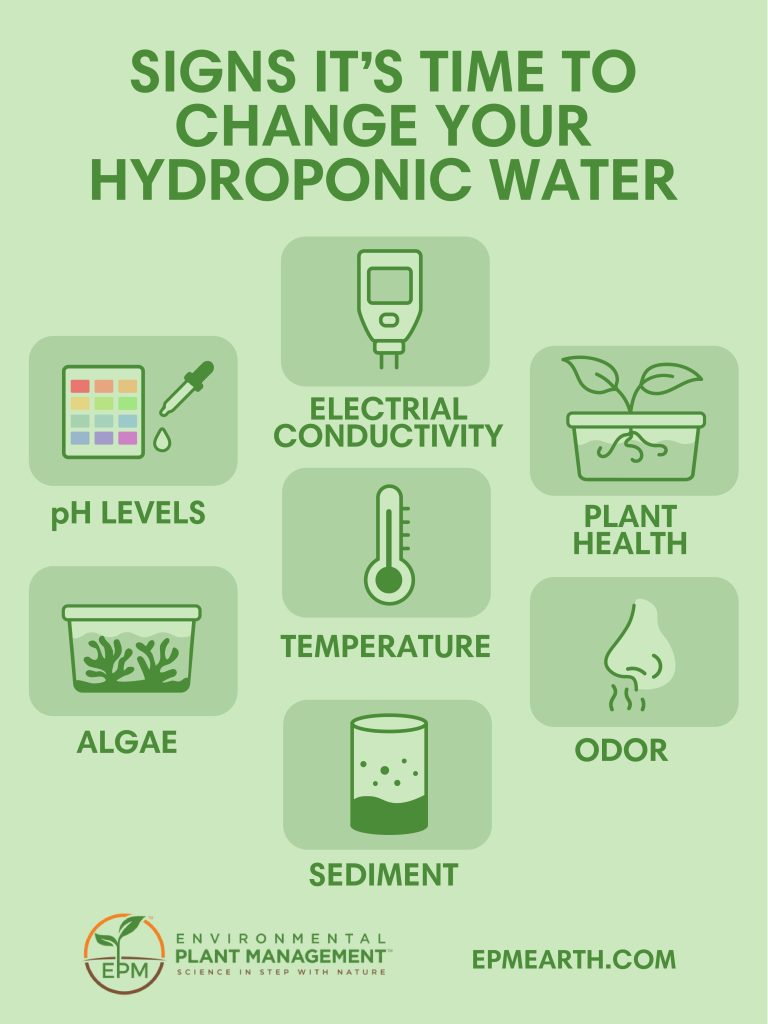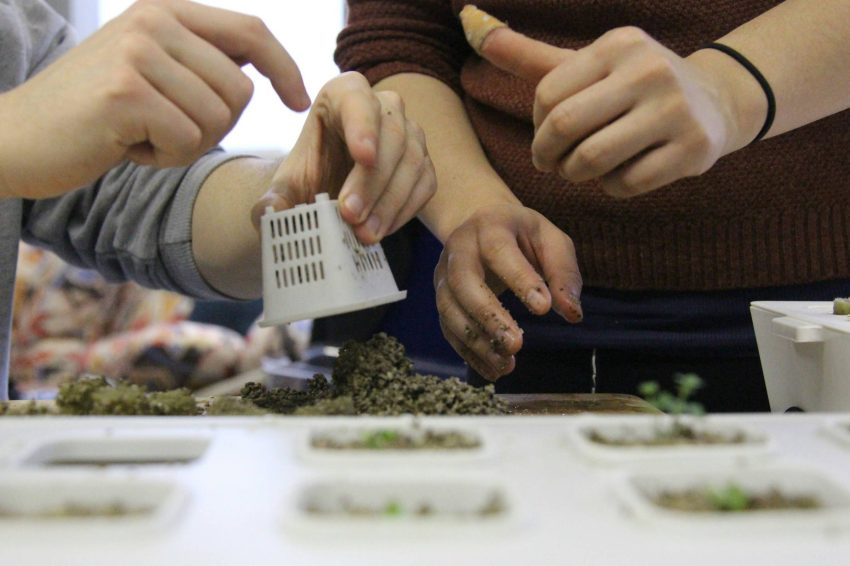Share this post
In a hydroponic system, the lack of soil makes water the most important component of healthy growing. It is essential to closely monitor your water quality for things like nutrient deficiencies and temperature, so that you can avoid attracting pests, stunting growth and reducing the quality of your harvest. While it might seem overwhelming at first, changing the water in your hydroponic system will soon become a part of your regular routine. By changing your water regularly, you’ll ensure that your pH and EC remain stable, which will in turn help your plants to stay healthy.
Below, we’ll take a look at the importance of frequent water changes, how to know when your hydroponics water needs changing, and the best practices for draining and refilling your system.
How Hydroponic Water Change Frequency Affects Plant Health
The main reason to change hydroponic water regularly is to maintain consistent quality. Anytime your reservoir loses water, the contents of your nutrient solution also change. Depending on the amount of water you lose, the changes are slight variations or huge fluctuations, which can influence chemical build-up, pH levels and ultimately, plant health.
Frequent changes allow you to stay on top of system stability. For example, adding water as it evaporates rather than waiting to do one large water change will ensure stability and prevent stagnation. Stagnant water is practically an invitation for harmful pathogens, fungi, bacteria, and algae. Frequent water maintenance will also ensure correct pH and EC (Electrical Conductivity) balance, preventing shock and illness in your plants.
Another risk that comes with not changing hydroponic water frequently is that your plants will become more susceptible to disease and infection. The size of your system will ultimately dictate how often you need to change your water; however, a good rule of thumb to follow is that when you’ve topped off your water enough times to fill the reservoir, you should change and clean the system.
Signs It’s Time to Change Your Hydroponic Water

You’ll know when it’s time to change your water when your water quality check flags one or more of the following:
pH Levels
The pH of the water (level of acidity/alkalinity) needs to be within the correct range for your specific species of plants. While the ideal pH range varies between species, it generally falls between 5.5 to 6.5. There are a variety of ways to test the pH, including digital probes and colour-changing strips. Signs of a pH imbalance can include yellowing leaves and stunted growth.
Electrical Conductivity (EC)
In hydroponics, nutrients typically come in the form of water-soluble salts. When the salts dissolve in water, they separate into ions. Ions have the ability to conduct electricity due to their positively and negatively charged particles. An Electrical Conductivity (EC) check measures the salt concentration in your hydroponic nutrient solution, and therefore indicates the concentration of nutrients within the solution. An EC check will ensure that your plants are receiving the right amount of nutrients for optimal growth – again, the preferred EC range will differ between plant species.
Temperature
If the nutrient solution in a hydroponic set-up is too hot or cold, it can lead to various problems, including a decline in oxygen or reduced nutrient uptake. By regularly monitoring the temperature of your water, you’ll protect your plants from stress and disease.
If the temperature is too hot, you risk lowering the oxygen levels. This can lead to root vulnerabilities like stress and susceptibility to disease. Bacteria and algae also thrive in warmer temperatures, as well as pests. On the other hand, a hydroponic system that is too cold can slow down plant metabolism and root function. This can lead to stunted growth and reduced oxygen and nutrient uptake. Extremely cold water can even damage plant roots.
As a general rule, you should aim for between 18°C to 22°C for an optimum hydroponic environment. However, always check the specifics of whatever you’re growing to avoid any illness or damage.
Algae, Odor & Sediment
Another obvious sign of something being wrong with your hydroponic system is the presence of algae, odor or sediment. This will often indicate a problem with water quality – here is what each of the above can mean:
- Algae growth can deplete essential oxygen levels in the water and create a favourable environment for harmful pathogens. It can also clog filters and pipes, reducing the efficiency of your system.
- Unpleasant odours are a red flag for bacterial growth or decay. These symptoms signal potential water quality problems that could harm the health of your plants.
- Sediment can also build up and cause clogging issues.
Having a regular water-changing routine will help ensure that things like algae and sediment don’t reach the point where they are clogging lines and causing harm to plant health.
Regular Visual Checks for Plant Health
Any cultivation schedule should include regular visual plant inspections. The chances are that if your plants are unhappy, you will easily spot it. Look out for plants that are wilted, discoloured, diseased or infested – all of the above could indicate an issue with your water quality.
An Important Note About Root Exudates
Users of Clear Flow and Clear Zona often find that their systems run smoothly and the water passes the “visual check.” But even clear water can hide invisible issues. That’s why we strongly recommend growers change their water at least every 30 days, even if everything looks fine.
Here’s why: as plants grow, their roots naturally release compounds into the water, known as root exudates. Some exudates, like benzoic acid, act as natural growth inhibitors. Over time, they build up in hydro systems, throwing off nutrient balance and silently reducing yield. This buildup isn’t something nutrients alone can fix, so if the water looks clean but chemically out of balance, your plants will struggle.
This isn’t an issue in soil because the microbes help break down or buffer these compounds. In hydroponics, however, this is something you, as a grower, have to manage.
The Natural Irrigation Cleaners: Clear Flow and Clear Zona
Designed to prevent biofilm and mineral buildup in irrigation systems, Clear Flow uses breakthrough technology of non-GMO catalytic enzymes for a natural irrigation system cleaner. The solution uses plant-based natural ingredients, making it safe to use during all plant product cycles, so that regular maintenance won’t interfere with your yield!
For a heavier-grade approach that is still gentle on your plants, Clear Zona uses a two-pronged approach that is also free of harsh chemicals. The formula boasts a proprietary combination of catalytic enzymes (Part A) and beneficial microbes (Part B) to naturally degrade biofilm and other organic debris. Specific enzymes are required to break down biofilm components into forms that specific microbes can digest so that clogged irrigation lines & emitters are restored to optimum functionality and plant roots are clear for full nutrient uptake.

